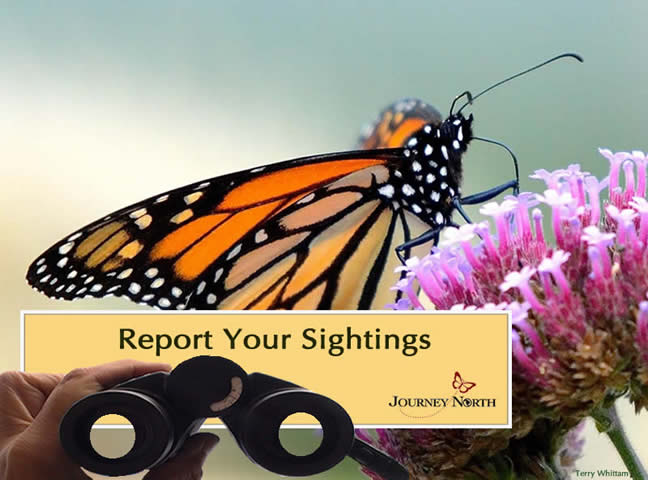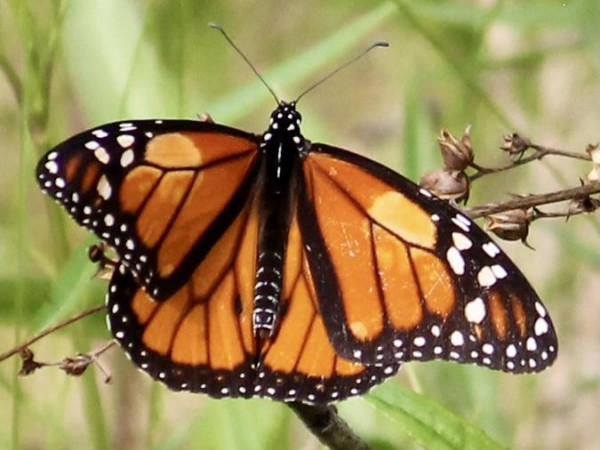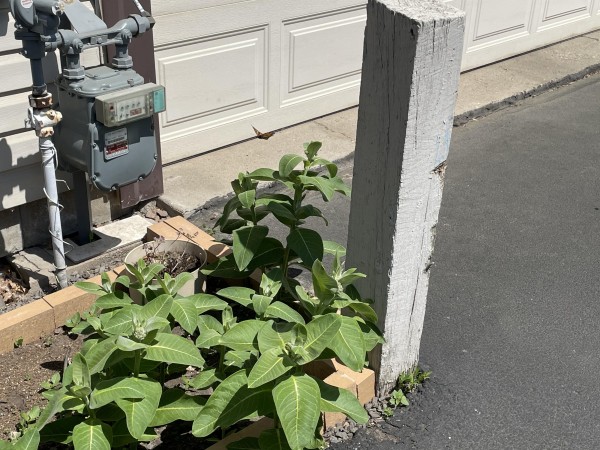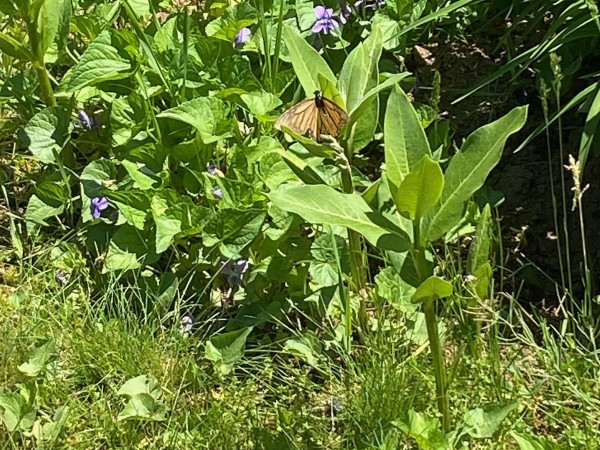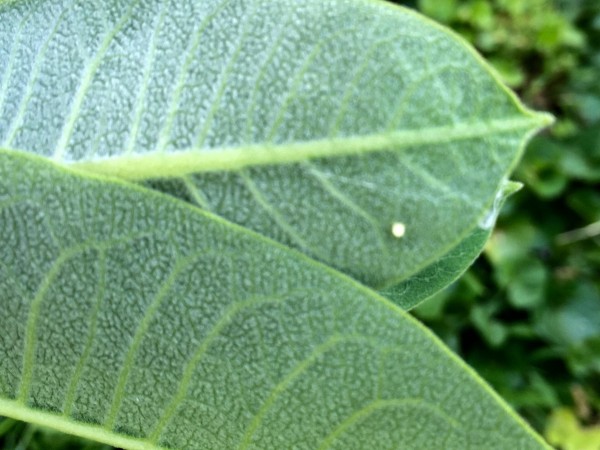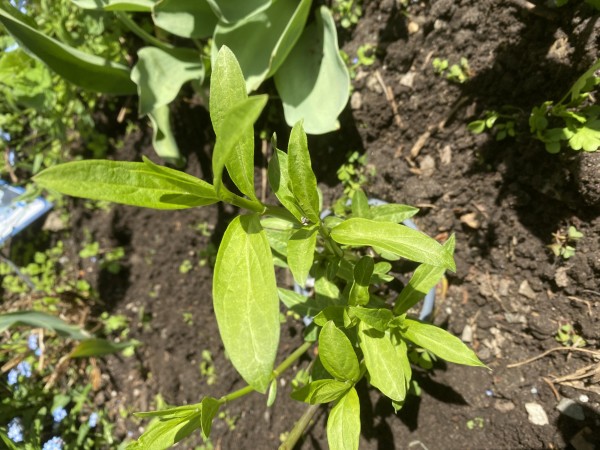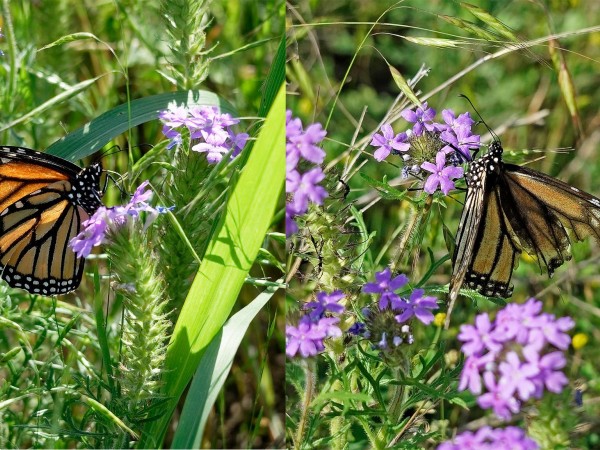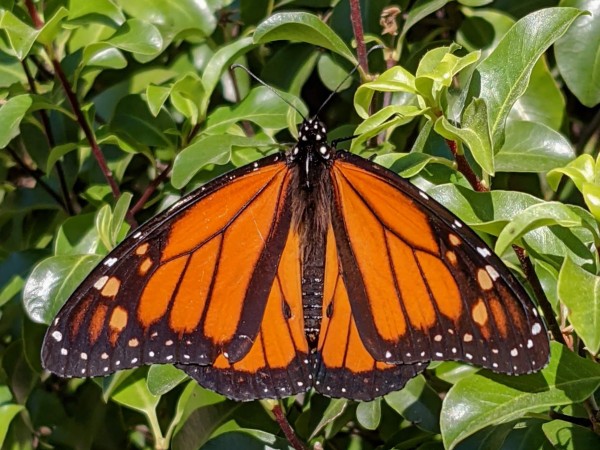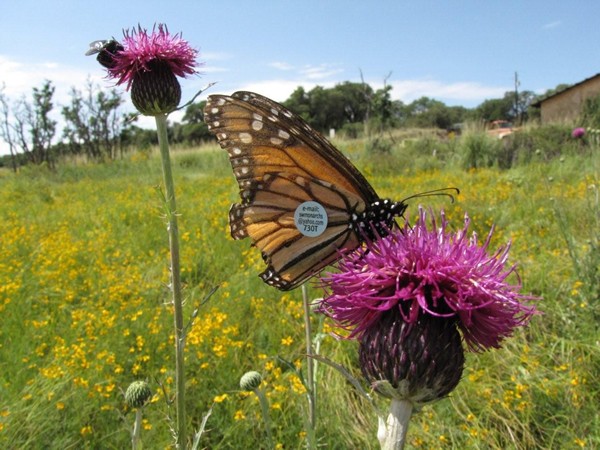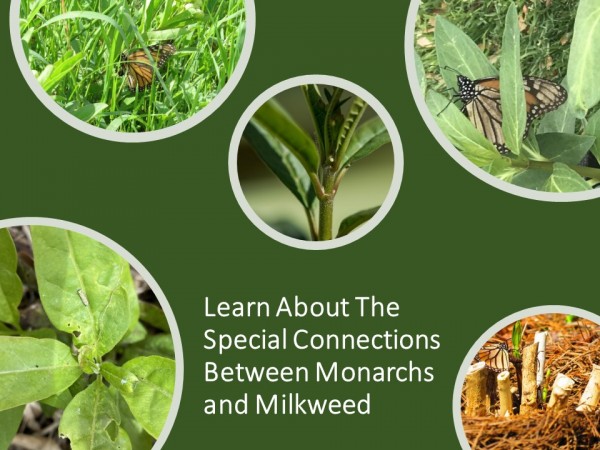Migration Carries On
Monarchs are now moving through the Upper Midwest, southern Ontario, and New England. Migratory activity will remain high over the coming weeks. Keep reporting to Journey North.
Eastern Monarch Population
Migrating Monarchs
The leading edge of monarch migration is now hovering between latitude 40-45°N. More reports are coming in from the Upper Midwest, southern Ontario, and New England. How far north will monarchs be next week? Explore our Monarch Adult (FIRST sighted) map and make a prediction.
Judy in Verona, WI: "First Monarch sighting" (05/17/2021)
Joann in Saint Paul, MN: "First monarch on new milkweed." (05/17/2021)
Colleen in Portland, CT: "The first Monarch to return to the Butterfly Garden in the courtyard at Gildersleeve School!!! Our 3rd Graders are sooooo excited!!! And she laid eggs!!!" (05/17/2021)
Cindy in Francestown, NH: "Stopped at an intersection, I had an adult monarch drift across in front of my car. Couldn't tell male or female from my position." (05/18/2021)
JP in Chatham-Kent, ON: "A very weathered and tattered female laying eggs in milkweed patch. Milkweed shoots are currently up to about 6" tall." (05/18/2021)
Eggs, Larvae, and Milkweed
As monarchs move north, they are laying eggs along the way. Check milkweed plants — both leaves and flower buds – for eggs.
Della in Plymouth Meeting, PA: "After observing a Monarch flying out of my yard, I checked my milkweed and found at least 7 eggs. This is well over a month earlier than I've ever seen a Monarch or eggs in this area." (05/14/2021)
The northern edge of larvae reports are clustered around latitude 39-41°N.
Lynette in Smyrna, DE: "[Monarch larva] on common milkweed in front of visitor center at Bombay Hook NWR." (05/16/2021)
Despite cold temperatures last week, milkweed continues to emerge ahead of the leading edge of monarch migration.
Lynn in Kirkland, QC: "Both common and swamp milkweed emerging in my butterfly garden." (05/17/2021)
Nectar-rich Flowers
While milkweed is critical for monarchs, nectar-rich flowers are also important. Many Journey North volunteers provide detailed reports of monarch nectaring behavior and the plants monarchs visit.
Gregg in Glen Rose, TX: "First Generation 1 I have seen this year. Then in another location I saw a surviving Generation 0. Both on Glandularia bipinnatifida, locally called just "Verbena". Lady Bird Johnson Wildflower Center (UT Austin) lists common names Prairie Verbena, Purple Prairie Verbena, Dakota Vervain, Dakota Mock Vervain, Moradilla, Alfombrilla. Anyway it's everywhere." (05/09/2021)
Western Monarch Population
Letter from Gail Morris: Western Monarch Spring Report #12
Out West, reports of monarchs are few and far between. But given the time of year, this is not surprising. As Gail Morris writes, "New sightings were small in number this week, a harbinger of the season as monarchs fly to their summer breeding areas through large uninhabited areas. But there was a new first sighting further north in Utah, revealing a glimpse of their journey. We’ll all be watching to see if new reports appear in Oregon this upcoming week, an indicator of some California monarchs on their Spring migration as well as other Western states."
Read more of Gail Morris’ Letter: Western Monarch Spring Report #12»
Keep Reporting
Migration is still moving along. Keep reporting your observations of monarchs, monarch eggs, monarch larvae, and milkweed. If possible, please include photos and ensure your photo is properly rotated. Photos help verify reports and we enjoy sharing them with our Journey North community!


